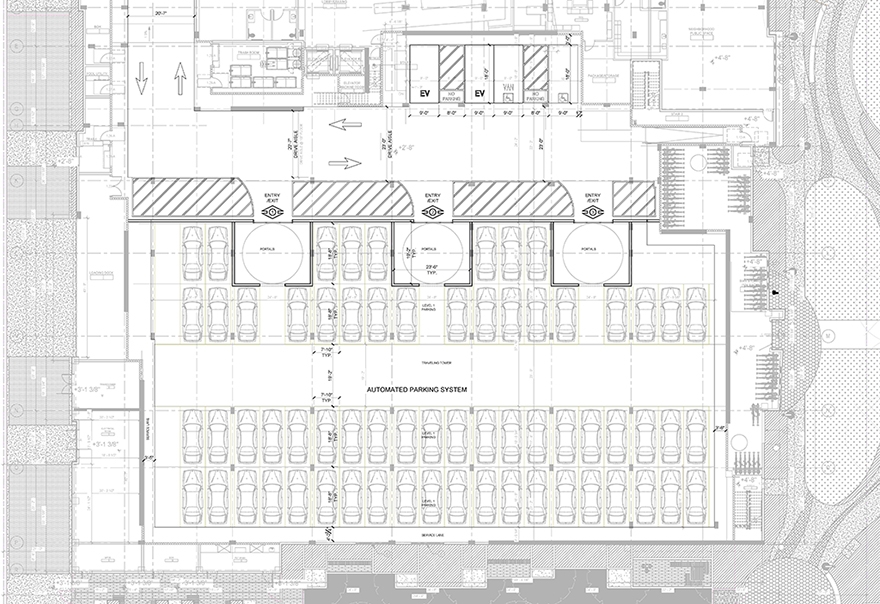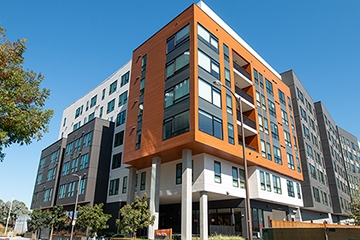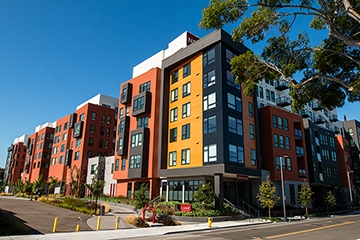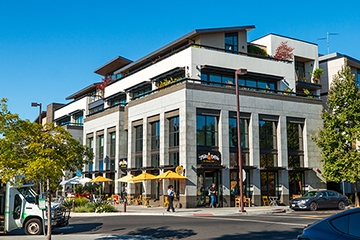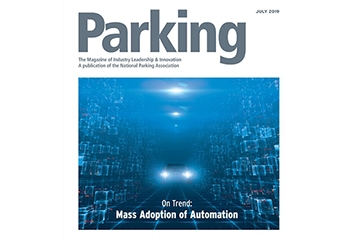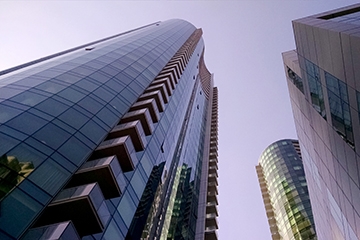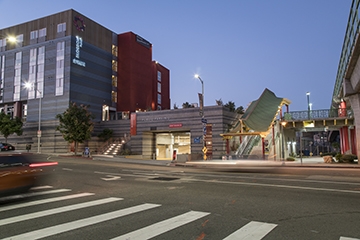The Owner Perspective – Greystar
David LoCoco (DL): What made this project so complex when it came to developing a parking solution?
Timothy Racine, Senior Development Manager (TR): The City of Menlo Park requires one parking space per unit, and while we plan on encouraging use of alternate transit modes, we still anticipate a lot of residents may have their cars with them. The water table is relatively shallow on the project site, between five and six feet below grade, which made excavation very expensive, to go along with height restrictions. That left us with a very tight envelope to provide an adequate number of parking spaces.
DL: What inspired you to explore the possibility of an automated solution, and how important was the parking solution to moving the project forward?
TR: The parking solution was absolutely critical. It was the key piece to our code compliance on this project, and being 100% compliant with code streamlines the entitlement process. We looked at costs and alternatives, and an automated parking system was really the only viable solution. While we hope to see more transit options in Menlo Park in the long term, right now we see parking as a benefit to the user experience, and we wanted something that was user friendly.
DL: Was the city receptive to a mechanical/automated parking solution? Did they have any input that altered the design concept?
TR: The projects are still under design, so it is still evolving. We had some early meetings with the fire district, and they raised concerns and questions we needed to address to get approval for the fully automated system at Menlo Uptown. For example, providing cat walks around the system for firefighters to get in, including a smoke detection system, meeting specific ventilation requirements among other requirements. Particularly with partners for whom the automated parking system is brand new, we have tried to start from the beginning by introducing the system and EV charging solutions to them, starting with videos to show everyone how it works, because it’s hard to visualize. You really need to see it.
DL: How do you anticipate the system will enhance the user experience?
TR: Users have reported they feel safer because they don’t have to walk around a garage at night, and there is more security from theft because a person cannot get into the system. There are also environmental benefits, because cars are turned off as they are being stored, which lowers emissions in the garage. We also think it provides an important amenity. We’re working with Parkworks to develop an app so residents can call for their cars before they leave their home, and have their car waiting when they get to the garage. Of course, we haven’t installed the system yet, so we won’t know for sure how effective it is until we see it in action, but that’s what we expect.
DL: Given this experience so far, would you consider a mechanical or automated project in the future and why?
TR: Given similar constraints on a project, I think we would. It’s obviously more expensive, so if you don’t need to do it, you wouldn’t, but we’ve been able to navigate through design. We have a ways to go, and our team is a little apprehensive about delivery, getting it installed, commissioned and up and running. The real test will be the operation and user experience. Given all of those things go in the right direction, yes. The more we do it and the more people use it, the less learning curve there will be for making it happen.
The System Provider’s Perspective – Parkworks
DL: How are you collaborating with the design team, and how important is that to successfully integrating a system like this?
Michael Dennison, President (MD): The earlier we can integrate the parking system into the overall design and work with the design team, the better. It takes a developer with a lot of patience to explore the options and make a decision, because there is so much that goes into it. Just the user interface and programming can be very complicated. There are twenty different ways you can drive a car into a system, and you need to look at all of them to make an informed choice. It’s also critical to have a parking expert on board who is well-versed in automated and mechanical solutions. They understand how parking works, we understand how the system works, and the developer understands the project as a whole. You need all those people to be on the same page.
Sam Neff, Vice President (SN): We really rely on the designers to help us get on the same page. There are many things that happen with mechanical parking that impact overall parking strategy, and if that discussion is had early, it creates a successful solution. If it doesn’t, there are a lot of ways for things to go wrong.
DL: How are you helping Greystar meet expectations on these two projects?
SN: Being crystal clear about the major issues and how they are being addressed is critical. Everyone needs to understand the major challenges and communicate solutions to those major challenges for stakeholders. People want to be confident that parking is not going to be a problem. As experts in mechanical and automated parking, we have our sphere of issues that we focus on, but working with a parking designer is what helps us take a step back to appreciate and communicate the issues that mean the most to Greystar.
MD: Expectation management is also critical. Educating everyone involved helps us frame goals differently. Real, live tours of other facilities is important to understand differences, nuances and to make sure expectations are in line and well communicated. For mechanical and automated parking, you really want a system that gives exemplary service. Less than that, and people are going to be unhappy. There is low tolerance for anything other than perfection.
DL: What lessons learned so far will help you improve Menlo Uptown, Menlo Portal and future projects?
SN: A fundamental challenge is coordination between all the project subcontractors. These parking solutions are not simple, and create many more touchpoints than traditional parking. Have these touchpoints been addressed, and addressed correctly? Perhaps the single biggest challenge is defining the electrical scope of work. Mechanical and automated parking systems are a new undertaking for most builders, and if everyone isn’t on the same page, things get under budgeted and underbid, which creates problems.
MD: The system is as big as the building, and sensitive equipment has to be installed during construction, so every effort needs to be made to protect it. That means making sure it gets installed in the right sequence, to avoid as much of the mess that’s just part of construction as possible. It’s critical that the contractor, developer and system designer all be on the same page to avoid costly setbacks.
DL: How is demand for mechanical and automated parking systems changing?
SN: In our opinion, people are waking up to the benefits of this kind of solution. The West Coast specifically is starting to embrace it. Parkworks has large fully-automatic projects in Seattle and Los Angeles that were recently completed and are being parked by end users.
DL: What is the most significant challenge you encounter when it comes to educating clients about this new technology?
MD: That low bid is not necessarily the right choice. Cost is an important factor, but even more important is being confident the system you choose will be supported for the life of the project. You need to know that over the next ten, fifteen, even thirty years, the system will be remain dependable. Parking is often unseen and taken for granted, but only when it’s done correctly. When it isn’t done correctly, it becomes a problem. We stress with our clients how critical selecting the parking system is to success, and that it takes a lot of wise decisions to get it there.

